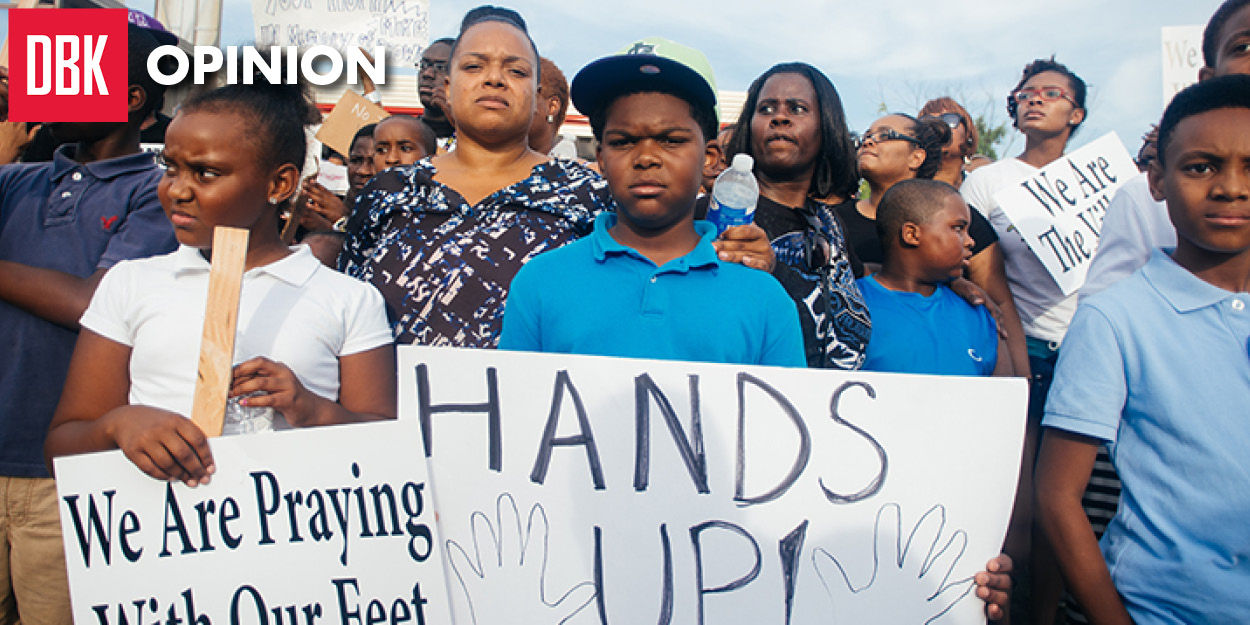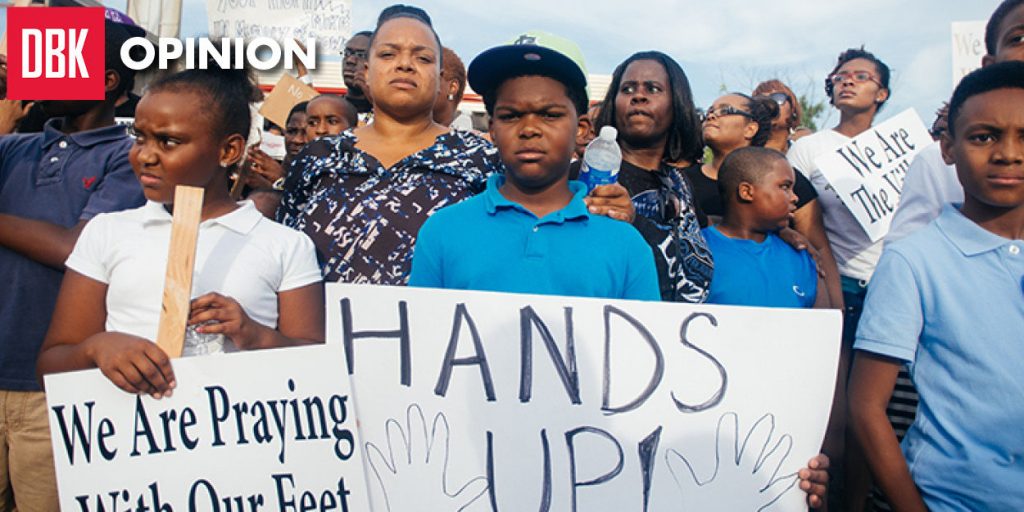On Nov. 24, a St. Louis County grand jury’s decision not to bring charges against Darren Wilson, a white police officer who shot and killed unarmed black teenager Michael Brown, set off a wild evening of protest, looting and clashes between demonstrators and law enforcement.
In the months since Brown’s death, the civil unrest and legal drama unfolding in Ferguson have framed conversations about racial injustice and police abuse nationwide. However, the murkiness surrounding Brown’s fatal encounter underscores the futility of organizing political coalitions around dissatisfaction with a particular court case.
By sifting through thousands of pages of grand jury materials, the jurors — the men and women tasked with judging the propriety of Wilson’s use of deadly force — were able to piece together a rough account of the initial altercation between Brown and Wilson. Multiple witnesses recalled Brown leaning in through the window of Wilson’s police vehicle after first making contact with the officer, and said the two engaged in an intense struggle. Bystanders’ testimony also corroborates Wilson’s account of firing off multiple shots from inside his squad car that did not incapacitate Brown, but led him to briefly flee before turning back to face the officer, who by then had emerged from his vehicle.
It is here that a few witnesses’ accounts diverge from Wilson’s narrative. A portion of the testimony is consistent with Wilson’s claim that the officer fired the fatal volley of shots only after Brown had begun to charge the officer. Other accounts describe Wilson executing Brown in cold blood after the teenager signaled his surrender and slowly began to approach the officer. Of the versions offered that were unfavorable to Wilson, many accounts contradicted one another and forensic evidence taken from the scene.
Whatever actually occurred, it’s obvious that the heap of conflicting stories frustrates any attempt to clearly reconstruct what happened during the final seconds of Brown’s life. And however satisfying an indictment and conviction might have seemed, condemning an officer on the basis of a few contradictory accounts would have been deeply unjust.
The rage that fueled the response to the shooting — and that might have inflamed Brown when Wilson confronted him — has roots in Ferguson residents’ fraught relationship with local law enforcement. As in many American cities, in Ferguson, young black men like Brown are significantly more likely to be pulled over compared to their white counterparts based on population proportion — 37 percent more likely, according to University of Missouri-St. Louis criminology professor Richard Rosenfeld.
In addition, residents are barraged by fines and arrest warrants stemming from minor traffic infractions and failures to appear in court on these charges: The average household faces $321 in fines and three warrants a year according to ArchCity Defenders. And although Ferguson is about two-thirds African-American, black people make up only three of the town’s 53 officers.
Naturally, many residents view cops as parasites bent on harassing and exploiting locals, and they identified Brown’s killing as the tipping point of collective outrage.
As with the killing of Trayvon Martin in 2012 , when an emotionally charged episode becomes a symbol for racial injustice, aspirations for reform become bound up with the proceedings of the case. However, if the problem of police racism is reduced to Brown’s death, opponents of reform can cast doubt on the issue by proving Wilson’s actions justified.
Conversations become dominated by details of cases and procedural hang-ups, rather than the conditions that give rise to these tragedies.
Moreover, when court cases become so politically potent, jurors sympathetic to reining in police departments might be inclined to indict or convict cops even when the evidence against them is thin. The Michael Brown shooting and police racism are not one and the same. It’s completely consistent to approve of the grand jury’s decision and demand radical change.
The first step for Ferguson — one that could be applied throughout the U.S. — would be attaching lapel cameras to every cop in town. Implemented correctly, internal police surveillance would cut down on police brutality, eliminate the ambiguity of cases like Brown’s and allow conversations about race to return to questions of policy.
Charlie Bulman is a junior government and politics major. He can be reached at cbulmandbk@gmail.com.





